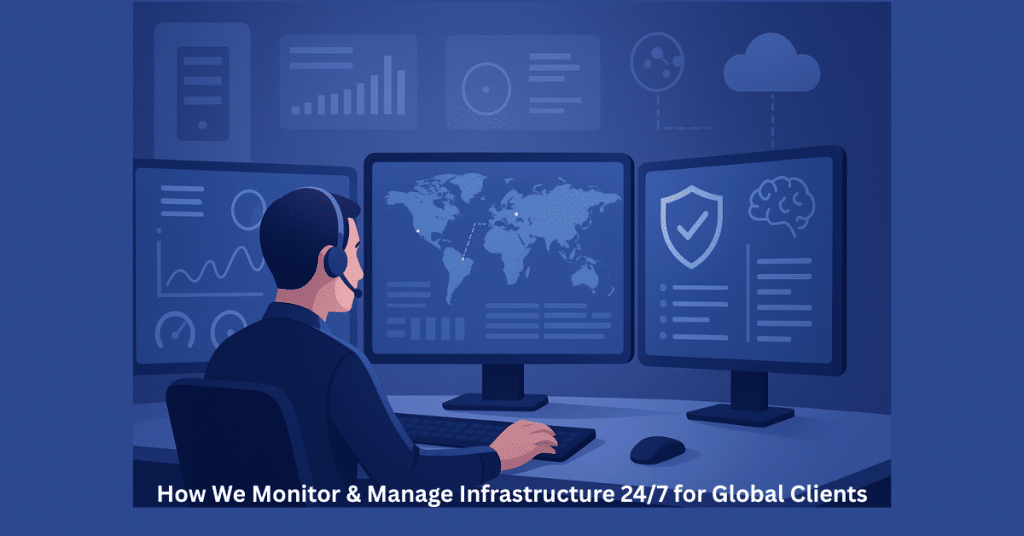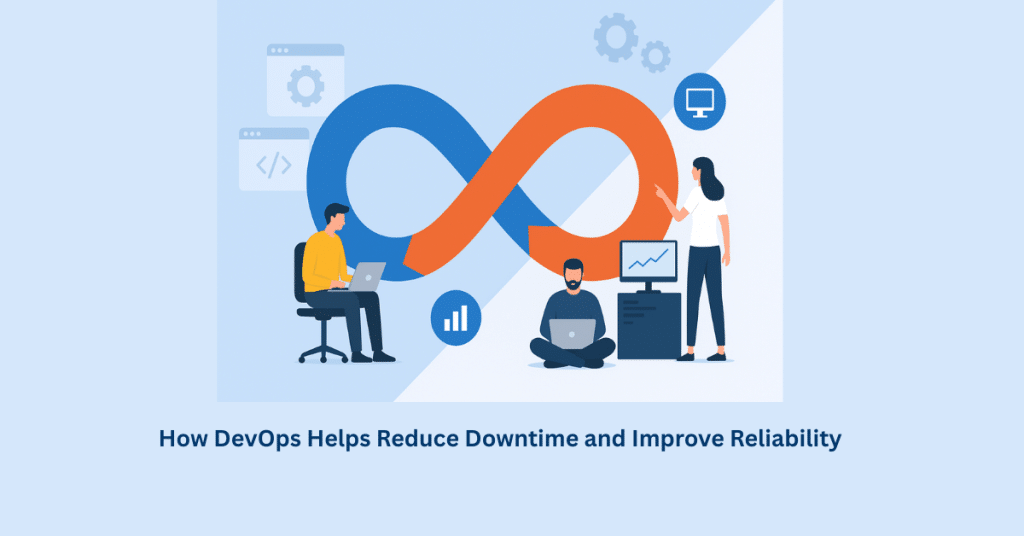DevOps allows improved communication and collaboration between the development and operations teams, enabling them to function together more efficiently. Development and Operations are the two terms that make up the term DevOps. Through the use of DevOps, an application development life cycle, including development, testing, deployment, and monitoring, may be managed by a single team.
These two teams used to frequently operate in isolation from one another, hardly collaborating. When new features or upgrades are released, this could cause issues because the operations team will receive the code from the development team and have to figure out how to deploy it. This procedure was frequently laborious and slow, which resulted in finger-pointing when something went wrong.
The objective of DevOps is a successful software deployment, and to do this, DevOps currently makes use of automation. Automation contributes to more frequent and lower-risk releases. Additionally, Compressing the length of the system’s development life cycle while continually introducing updates, services, and features in restricted accordance with business goals is the ultimate goal of DevOps.
A software development methodology called DevOps makes it possible to produce high-quality software more quickly and reliably. There are several stages involved in it, including continuous development, continuous integration, testing, deployment, and monitoring.
History of DevOps
Waterfall and Agile were the two software development approaches we used before DevOps.
Waterfall Model
One simple and linear paradigm for software development is the waterfall model. The top-down approach is used in this model. Collecting and evaluating demands is the first step in this model’s various. The process involves obtaining the client’s needs to construct the application. You then attempt to examine these prerequisites. The following process is called Design, during which you create the software’s blueprint. This is where you can envision the software’s appearance.
After the design is complete, you go to the implementation phase and start writing the application’s code. The development team collaborates. After the design is complete, you go to the implementation phase and start writing the application’s code. The development team collaborates on several application components.
After the application has been developed, you test it in the verification process. The application is put through a variety of tests, including performance, integration, and unit tests. The software gets deployed onto the production servers once all testing is finished. Finally, we reach the Maintenance stage. The performance of the application has been monitored throughout this period. In this stage, any problems with the application’s performance are fixed.
Agile model
Agile Methodology is an evolutionary approach to software development that involves the project being divided into multiple sprints of work or iterations. Similar to the waterfall approach, each iteration includes steps including requirements gathering, design, development, testing, and maintenance. Typically, an iteration lasts between two and eight weeks.
Agile Methodology
In the first phase of Agile, a company publishes an application with a few high-priority features.
Customers or end users provide you with comments regarding the application’s performance after it is released. After adding a few new features and making the necessary modifications, you re-release the application this is the second cycle.
Until the desired software quality has been met, you repeat this complete process.
Why Does It Matter?
So why is there all of this protest? Software quality has been shown to increase with the implementation of these techniques. Organizations working on different software and operations projects cooperate more effectively, cut down on lead times and friction, integrate and test code continuously, and release more frequently.
It all comes down to identifying process inefficiencies and creating a culture of open communication and trust. Handling mistakes and unplanned tasks, utilizing automation, and placing a strong emphasis on observability to obtain insightful feedback are further components of it.
The process of developing software, updating it, and releasing it is accelerated by DevOps.
First of all, there is a constant requirement for new software features and upgrades to be delivered.
Clients don’t want to wait weeks or months to get their hands on the latest innovations and upgrades; they want to have access to them as soon as they become available. Shorter development cycles are now necessary as a result, which puts pressure on the development and operations teams to collaborate more closely.
Complicated application handling is made simpler by DevOps.
Second, software programs are becoming more complicated. The emergence of services (like Kubernetes and Docker) has made software application deployment and management more challenging. Some of these processes can be facilitated by DevOps, which makes managing complicated apps smoother.
Businesses may better utilize data with the help of DevOps.
Finally, there is a rapid increase in the amount of data that needs to be processed and stored. This is particularly relevant for businesses operating in the Internet of Things (IoT) sector, as they handle enormous quantities of data gathered from sensors and devices. To help businesses use data more effectively, DevOps may streamline the processes of data gathering, processing, and storage.
What is the life cycle of DevOps?
As previously stated, the DevOps Life cycle consists of multiple phases, including continuous development, continuous integration, testing, deployment, and monitoring.
Let’s now explore each phase of the DevOps life cycle thoroughly.
Continuous Development:
This stage comprises the “planning” and “coding” of the program. During the phase of planning, the goal of the project is determined, and the developers get to work building the application’s code. While there are various DevOps tools available for code maintenance, no tools are necessary for planning.
Any language can be used to write the code, but Version Control technologies are used to keep it updated. Source Code Management is the process of keeping the code updated. The most often used tools are JIRA, SVN, Git, Mercurial, and CVS. In this stage, the code can also be built or packaged into an executable file that can be sent to any of the subsequent phases using tools like Ant, Maven, and Gradle.
Continuous Testing:
During the development process, the software that has been developed is continuously evaluated for bugs. Automation testing tools like Selenium, TestNG, JUnit, etc. are used for continuous testing. QAs can comprehensively test various code bases in parallel with these tools to make sure there are no functional problems. Docker Containers can be used to simulate the test environment at this phase.
TestNG generates the reports, and Selenium handles the automation testing. Jenkins is a Continuous Integration platform that can help automate this entire testing procedure. Let’s say you have a Java Selenium code that you have built to test your application. This code can now be built with Maven or Ant.
The code is tested for User Acceptance Testing (UAT) after it has been built. Jenkins may be used to automate this entire procedure.
When testing is done automatically rather than by hand, a great deal of labor, time, and effort is saved during test execution. In addition, report generation is an important benefit. It becomes easier to evaluate the test cases in an examination set that did not pass. The test cases can also be scheduled to run at specific times. The code is regularly merged with the current code after testing.
Code that adds new functionality is constantly merged with the code that already exists. Software is always being developed, so to reflect changes for the end users, the new code must be seamlessly and regularly connected with the systems.
Continuous Integration:
The center of the whole DevOps life cycle is this phase. Developers must commit changes to the source code more frequently as part of this software development process. This might happen every day or every week. Then, each commit is created, enabling the early identification of any issues that may exist. Compiling code entails not just compilation but also code review, packaging, unit testing, and integration testing.
Code that adds new functionality is constantly merged with the code that already exists. Software is always being developed, so to reflect changes for the end users, the new code must be seamlessly and regularly connected with the systems.
Jenkins is a widely utilized tool in this stage. Jenkins retrieves the new code from the Git repository whenever there is a change, and it builds the code into an executable file that can be either a jar or a war. The production server or test server receives this build after that.
Continuous Deployment:
The code is now being pushed to the live servers. Making sure the code is deployed appropriately on each server is also crucial. Let’s attempt to fully understand a couple of concepts regarding containerization that occurred and configuration management technologies before continuing. This collection of technologies facilitates Continuous Deployment (CD).
The process of defining and upholding regularity in the functional requirements and performance of an application is known as configuration management. To put it another way, it’s the process of releasing deployments to servers, scheduling updates for every server, and above all maintaining uniform configurations across every server.
The constant deployment of new code requires the use of configuration management technologies to ensure that activities are completed rapidly and often. Ansible, Chef, SaltStack, and Puppet are a few of the frequently used tools in this environment.
Tools for containerization are also crucial during the deployment phase. The two most common tools for this are Vagrant and Docker. Consistency throughout Development, Test, Staging, and Production environments can be helped by these tools. In addition, they facilitate the quick scaling up and down of instances.
Tools for containerization aid in preserving uniformity between development, testing, and deployment environments for applications. Because these tools package and develop the same dependencies and packages used in the development, testing, and staging environments, there is no possibility of problems or failures in the production environment when using them. It provides the easy running of your application on many computer systems.
Continuous Monitoring:
The Operations team is involved in this practice since they will be maintaining a check on user activities to look for bugs or any inappropriate system behaviour. For this, Splunk, ELK Stack, Nagios, NewRelic, and Sensu are often used tools. With the aid of these tools, you may maintain an attentive eye on the servers and the performance of the application in addition to being able to proactively assess the system’s health.
Additionally, they can raise system dependability and productivity, which lowers the need for IT support. If any significant problems are discovered, they are communicated to the development team so that they can be resolved during the iterative development phase. This causes the problems to be resolved more quickly.
This concludes the DevOps solution blog post. Visit Geeks Solution’s official website to read more articles about the technologies on IT services right now, such as DevOps, Cloud Services, server management, Infrastructure Solutions, Hosting etc.
Are you trying to find a DevOps Solution provider? then It’s Geeks Solution that has the solution you need. Contact us. You can contact us at +91-8484980596 or email sales@geekssolutions.in. Visit Geeks Solution’s official website to read more articles about the technologies on IT services right now, such as DevOps, Cloud Services, server management, Infrastructure Solutions, Hosting etc.



